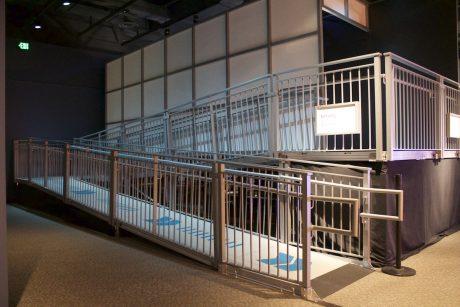COVID-19 has led to a new norm of social distancing that will undoubtedly play a major role in how people gather at events in the coming months and years. As live theater productions, sporting events, conventions, and other events slowly return, it’s likely that many of these venues will make efforts to adapt their settings to accommodate new social spacing requirements and requests.
“When it comes to staging and seating, in many cases it’s no longer business as usual,” said Cindy Albrecht, director of sales and marketing for Staging Concepts, a leading provider of portable staging solutions. “Our clients are coming to us with requests for solutions that allow for additional social distancing, and we are continuing to take steps to plan for future changes and accommodations that venues will seek for the comfort and safety of their guests.”
Staging Concepts says that examples of potential future design and staging requirements will likely include:
- The addition of more VIP sections at stadiums and arenas. Because these VIP areas tend to allow more space for fans to socialize and enjoy the game, it’s probable that more stadiums will install these sections. Also, sports facilities are likely to consider adding more luxurious seating options as fans require new incentives to leave the comfort of home to visit a ballpark or stadium.
- The use of temporary platforms, ramps or stairs in stadiums and arenas. Such platforms are used to help separate merchandise tables, food kiosks and guest services from the concourse floor.
- Increased demand for camera platforms/media risers. As the sports world begins to come back online with adapted seasons and spectator-less events, media crews will need to be adequately spaced out and accommodated in a whole new way.
- The addition of inserts or tables at theaters and other venues. Future design considerations may require a small table or insert between seats to help space out guest seating.
- The installation of more barricades and guardrails. These barriers can be used to form lines and to help facilitate the number of people entering or exiting a building at one time.
- The use of more temporary and custom staging equipment, such as rolling staging platforms, risers and portable seating. Temporary equipment can be used to quickly re-design a space as needed for events or during a health crisis. For example, Staging Concepts offers portable platforms, ADA ramps, railings and stair units that can be used to construct temporary medical facilities at hospitals or alternative care sites, such as unused convention center show floors or ballrooms.
According to Albrecht, key factors for staging and designing seating areas at venues will be flexibility and modularity. “These non-permanent solutions will give architects, designers, building operators and facility managers the ability to install and test solutions at their venues and then adjust or change them if needed,” she said. “Flexible options also are less costly than permanent solutions that require pouring concrete.”
For more information on staging, seating, barricades, guardrails and other components, call 800.337.5339 or email info@stagingconcepts.com.
Learn more about Staging Concepts, here.
Off
More News
Support USITT
For many 501(c)3 nonprofit organizations, USITT included, donations are a lifeline. We are able to continue to expand our online offerings to our Members and to our industry thanks to Membership dollars and the generosity of our donors.




.avif)


